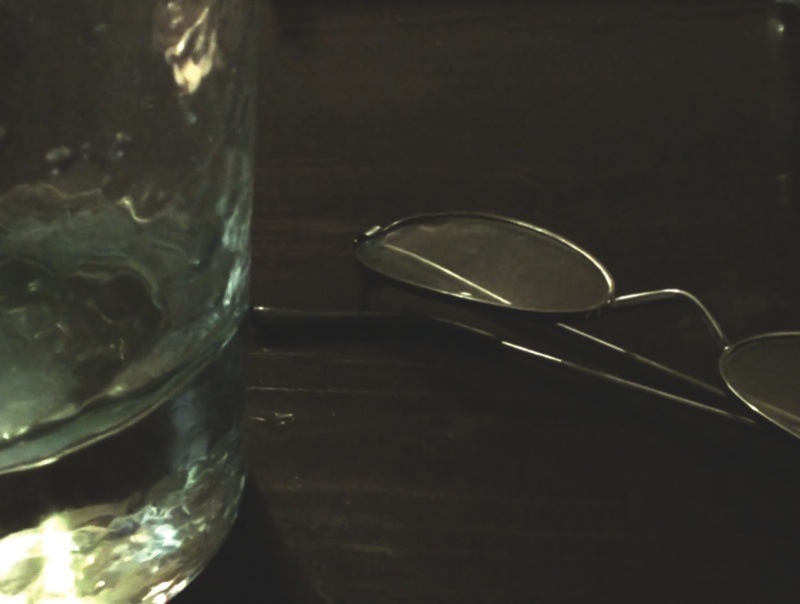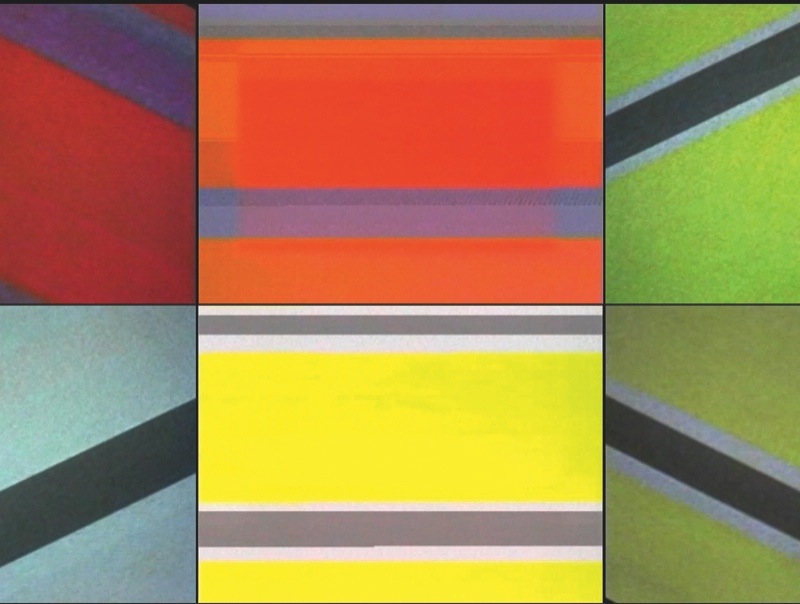Malcolm Le Grice: In the Cinema
The English filmmaker Malcolm Le Grice is known for an extensive and influential filmography of single- and multiple-projection films and performed cinema dating to the mid-1960s . His practical and theoretical contributions to British avant-garde film are major, both through his role in forming the London Filmmaker’s Co-op and through his critical writing in books such as “Abstract Film and Beyond” (1977). He was also a pioneering practitioner of computer-generated moving images, creating such work as early as 1970. Le Grice attends Media City to present a retrospective screening of four films and four more recent video works, including a performance of Principles of Cinematography (1973), not presented in more than 40 years.
Principles of Cinematography
Format: 16mm with performed sound
Duration: 6 min
Year: 1973
A reading about the production of acetate motion picture film from Leslie J. Wheeler’s book Principles of Cinematography, in front of a screen on which clear leader is projected. A context for film’s materiality.
Blind White Duration
Format: 16mm
Duration: 10 min
Year: 1968
Firstly it is a film concerned with constructing an experience out of limited perceptions. The viewer is introduced to a limited range of images in short, soft fade-ins and -outs or quick flashes. Secondly it is concerned with the light of the projector — the white screen and the white image which emerges out of it. Thirdly it is concerned with repeats and near-repeats in different sequences and superimpositions. Fourthly, with the role of the viewer as a positive constructor of his or her own experience of the images. And fifthly with the use of unexceptional images which are not contrived in a studio or dramatic sense.
Berlin Horse
Format: 16mm
Duration: 9 min
Year: 1970
An attempt to deal with some of the paradoxes of the relationships of the “real” time which exists when the film was being shot and the “real” time which exists when the film is being screened, and how this can be modulated by technical manipulation of the images and sequences. Sound by Brian Eno.
Academic Still Life
Format: 16mm
Duration: 6 min
Year: 1976
In much the same way as a Cezanne painting records within its image the problem of stabilizing a perception and the way in which shifts in viewpoint modify the spatial experience, the film uses time lapse and time exposure to seek a filmic equivalent for this aesthetic.
Even a Cyclops Pays the Ferryman
Format: video
Duration: 17 min
Year: 1998
An allegory for the passage from being alive to being dead, the continuing life of others beyond, the reconstruction of physical energies from physical decay. The cyclops is the one-eyed father, the one-eyed king in the land of the blind, the single lens of the camera, three screens beyond stereoscopy.
Absinthe
Format: video
Duration: 1 min
Year: 2010
Visiting a small back-street café in Prague for sausage and wine led to trying absinthe for the first time – shades of Manet, Degas and Picasso.
Oona Mosna
Jonas
Format: video
Duration: 3 min
Year: 2013
An impromptu portrait of Jonas Mekas shot at the Serpentine Gallery, London on the occasion of a celebration of his 90th birthday. All made in a single take whilst Mekas videos Mike Figgis playing flugelhorn and Rosey Chan plays piano.
Joseph’s Newer Coat
Format: video
Duration: 17 min
Year: 1998
Entirely made from colour fields recopied, re-videoed and superimposed. It explores interference rhythms produced by a strobing rewind of tape, the full screen and screen within screen within screen. The music was produced in very close collaboration with Stewart Louis de Cannonville and is as important to the work as the visual experience.






